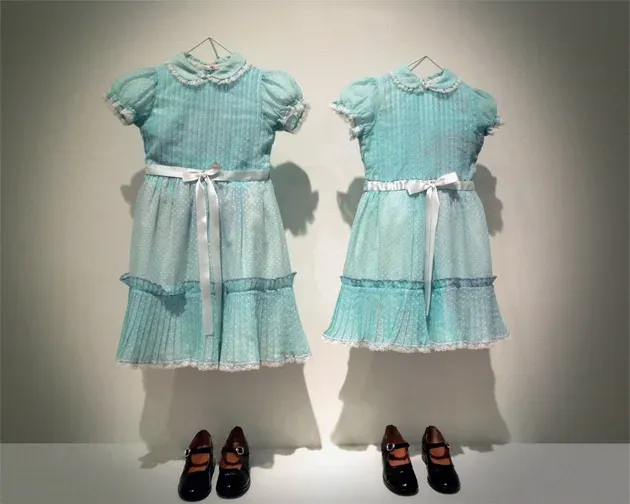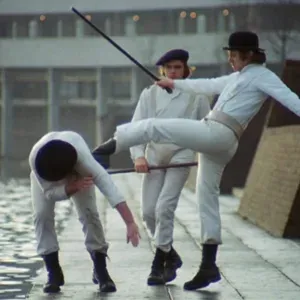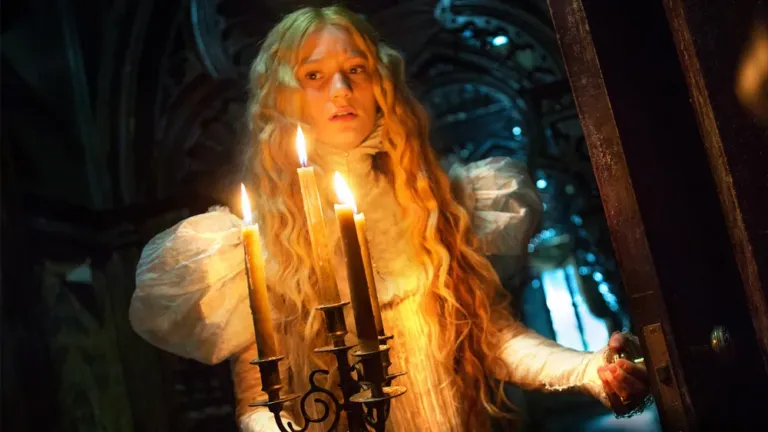Milena Canonero
Milena Canonero is one of the most iconic and respected costume designers in cinema history, with a career spanning over five decades, contributing to the visual aesthetics of some of the most celebrated films ever made. Born in Turin in 1946, Canonero studied art and design before moving to London, where she began working as a costume designer for theater and film. Her talent and vision led her to collaborate with some of the world’s most renowned directors, such as Stanley Kubrick, Francis Ford Coppola, and Wes Anderson.
Collaborations with Stanley Kubrick and the Transition to Horror
Milena Canonero’s work is perhaps best known for her collaboration with Stanley Kubrick, a director with whom she shared an artistic vision and an obsessive attention to detail. Their first project together, *A Clockwork Orange* (1971), marked the beginning of a partnership that would have a lasting impact on cinematic aesthetics. However, it is with Shining (1980), one of the most iconic horror films ever, that Canonero left an indelible mark on the genre.
In Shining, Canonero worked on costumes that not only reflect the characters but amplify the psychological tension and claustrophobic atmosphere of the film. The characters’ costumes, particularly those of Jack Torrance (played by Jack Nicholson) and Wendy Torrance (played by Shelley Duvall), are simple and realistic but carefully chosen to emphasize Jack’s descent into madness and Wendy’s vulnerable innocence. The choice of the red sweater worn by Jack during the iconic axe scene is not accidental; the color red evokes blood and violence, foreshadowing the horrific events within the Overlook Hotel.
Canonero’s Unique Touch in Horror
Though *The Shining* represents Canonero’s most famous contribution to the horror genre, her approach to costume design in this and other projects reflects a deep understanding of the power of costumes to influence storytelling and the viewer’s emotional experience. In her works, Canonero does not merely dress the characters; instead, she uses costumes as a means to express subtle themes, create visual contrasts, and build immersive worlds.
In Shining, the contrast between the characters’ bright clothing and the increasingly oppressive and dark interiors of the hotel heightens the sense of isolation and impending threat. The choice of seemingly ordinary, almost banal clothing intensifies the horror of the sudden and supernatural, making Jack’s madness all the more disturbing as it is rooted in an apparently normal reality.
 Other Forays into the Horror Genre
Other Forays into the Horror Genre
Besides *The Shining*, Canonero also worked on other films that, while not strictly horror, contain elements of unease and tension. For example, in *A Clockwork Orange* (1971), though more of a dystopian thriller than pure horror, the use of costumes is essential to building the disturbing identity of Alex DeLarge and his gang. The sterile white outfits, paired with extravagant and violent accessories, create a visual contrast that underscores the characters’ brutality and alienating nature.
In The Hunger (1983), a gothic horror film directed by Tony Scott, Canonero brought her unmistakable touch to a story about vampires. The film explores vampirism with an elegant and decadent aesthetic, where costumes play a fundamental role in defining the characters’ immortal and predatory nature. The timeless elegance of the garments reflects both the sophistication and danger of the protagonists, contributing to the creation of an atmosphere of subtle terror.
 The Legacy of Milena Canonero in Horror Cinema
The Legacy of Milena Canonero in Horror Cinema
While Milena Canonero is not primarily known for her work in horror, her ventures into the genre showcase her versatility and her ability to adapt her distinctive style to the narrative needs of very different films. In her horror projects, Canonero uses costumes not only as simple garments but as narrative tools that amplify suspense, express complex themes, and enrich the viewer’s visual experience.
Her ability to infuse psychological depth into the costumes and use them to intensify a film’s atmosphere makes her work in horror particularly memorable. Even though she is not specialized in the genre, her contributions to films like The Shining and The Hunger remain some of the most refined and influential in creating horror worlds that are both unsettling and visually captivating. Canonero has demonstrated that even in the scariest genres, elegance and attention to detail in costumes can elevate a story and make the horror all the more palpable.
Don’t miss reading the articles on other costume designers who have helped horror cinema scare us… they not only improved the films they worked on but also elevated the horror genre to new artistic heights. Their costumes are not just clothing but narrative tools that amplify suspense, express complex themes, and enrich the viewer’s visual experience.

Subscribe to our YouTube channel

 Other Forays into the Horror Genre
Other Forays into the Horror Genre The Legacy of Milena Canonero in Horror Cinema
The Legacy of Milena Canonero in Horror Cinema




